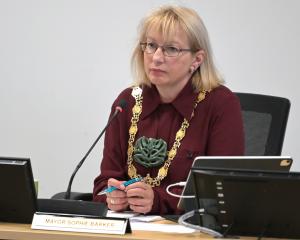The creation of marine reserves around these islands has been a point of argument for many years among users and prospective users.
There has been conflict between the fishing industry, which sees reserves as a potential threat to livelihoods, recreational fishing organisations, local Maori, and environmentalists, to name a few.
The creation of such reserves can be a political nightmare, yet there is little doubt of the need.
It is probably only in recent years that the general population has become aware of the fragility of New Zealand's marine environment, and of its importance.
But that importance is not confined to the continuation of underwater life; the careful monitoring of catch-rates of fish within the marine environment is proving to be crucial to sustain a fishery that, in turn, is becoming increasingly important in sustaining human life.
There is also a small but significant and growing attraction for tourists to our few existing marine reserves, where they can observe the natural world in a largely unmodified state.
The New Zealand Biodiversity Strategy, an official document published in 2000, recognised the importance of marine reserves, among many other aspects of environmental protection, and it set a target of reserve protection for 10% of the marine environment by 2010.
If that target seemed ludicrously small to some, it was because of the sheer scale of New Zealand's maritime holdings: the marine environment is 15 times larger than the land area, and our exclusive economic zone is the world's fourth largest.
Protection within a marine reserve means all life is secure from fishing, and it is prohibited to remove virtually anything from within - that includes banning dredging or dumping any matter in reserves.
Effectively, even fishing too close to a reserve can lead to trouble with the law.
There are at present about 30 such reserves around our coasts, all of them relatively tiny - indeed, they protect just 7% of our territorial waters - and two of them are in remote locations, the sub-Antarctic Auckland islands and the sub-tropical Kermadec islands.
Their creation, too, has not been from direct government action but more often from applications by local Maori, diving organisations, scientists and, especially, conservation groups.
That is why the Government's announcement this week on the creation of three extensive marines reserves is unusually significant.
Areas around the sub-Antarctic groups at Antipodes Island, Campbell Island, and the Bounty islands, will be given protection, involving 435,000 hectares.
That sounds substantial, and it is, although it is relatively minute in terms of the scale of New Zealand's marine zone.
Nevertheless, environmentalists will welcome the decision.
These are places few New Zealanders will visit, although there is said to be an increasing demand from the eco-tourism industry.
There will be satisfaction in that arrangements have been made with the fishing industry - probably the most frequent visitors to these islands - with prohibitions agreed on one type of particularly harmful seine fishing and a review of the impact of the beginning crab fishery in five years.
It is relevant, too, that the protections will prevent oil exploration within the reserves.
The Government will now be able to claim that its decision achieves the biodiversity strategy target, but it should not do so with an excess of trumpets: it was an easy decision to make, having little direct effect on any of the interest groups that have been campaigning for years for local reserves, and of little effect for most New Zealanders, let alone the tangata whenua.
A much bigger challenge faces the Government over the creation of marine reserves within the immediate vicinity of the three main islands.
Here, its performance has been less than adequate and there appears to be little sign of improvement given its past record, unless - as has been suggested - its members are becoming more sympathetic to green causes.
For example, there has been a campaign over the past 20 or so years for an area in Akaroa harbour to be made a marine reserve especially to aid the preservation of the threatened Hector's dolphins resident in the waters around Banks Peninsula.
Successive governments, including as recently as last year by the present Minister for the Environment, Kate Wilkinson, have consistently rejected the proposal, although that decision is now the subject of a judicial review.
The need for reserve protection in many of our modified harbours and natural inlets has been apparent for years, but the pace of preservation has been excruciatingly slow.
Thus, the decision to protect the sub-Antarctic island waters welcome as it is - cannot, unfortunately, be taken as an indication the pace is improving.












